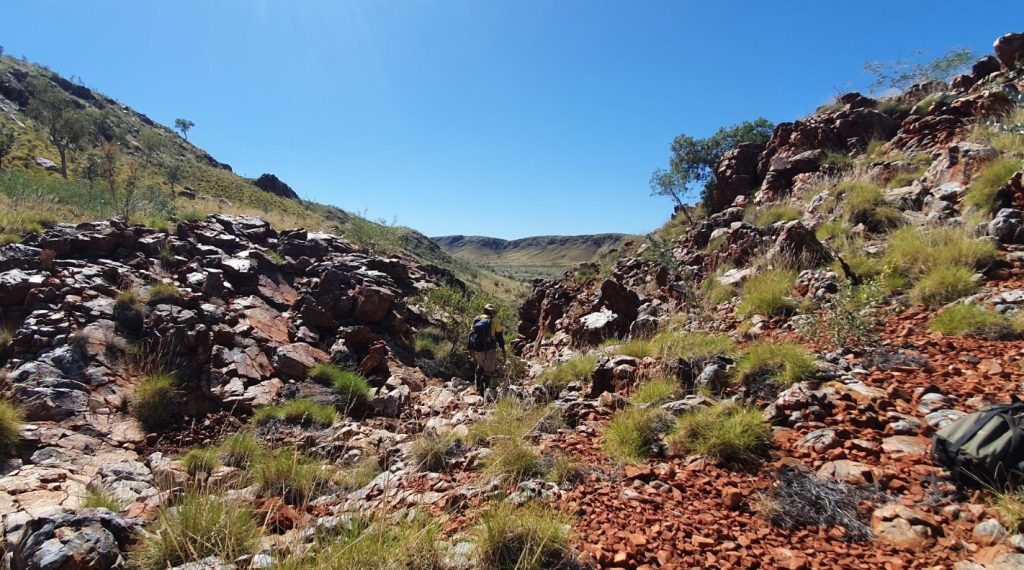Novo Resources posts high-grade drill results, Australia

Novo Resources Corp. [ASX-NVO; TSX-NVO & NVO.WT.A; OTCQX-NSRPF] reported updated, high-grade results from the maiden reverse circulation (RC) drill program completed at Nunnery North, Australia, in late 2023.
Novo is also pleased to outline the 2024 exploration plans for Nunnery North, at the Egina Gold Camp, as well as planned exploration programs near Karratha. The Nunyerry North project is a 70:30 joint venture with the Creasy Group.
Novo is in a strong financial position to execute its exploration plans in 2024, with a cash balance of A$17.4 million (C$15.4 million) as at March 25, 2024. In addition, Novo’s investment portfolio of shares held in ASX-listed companies and unlisted companies is currently valued at A$39.3 million (C$34.8 million).
Novo is debt free and carries no rehabilitation liabilities. See below the metrics used in relation to the valuation of Novo’s investment portfolio.
Nunyerry North exploration program: The Egina Gold Camp is a contiguous tenement package, targeted on a series of structurally complex, gold-fertile corridors, hosted by rocks of the Mallina Basin in the north and mafic / ultramafic sequences further south. These corridors trend towards De Grey’s 11.5 Moz Hemi Gold Project to the north and northeast. This tenure has been one of the main focus areas of Novo’s exploration programs over the last 18 months, culminating in the Egina JV with De Grey, and delineation of the Nunyerry North orogenic gold prospect.
The Nunyerry North prospect is located along the southern extent of the Tabba Tabba Shear, a deep tapping gold-fertile structural corridor where Novo plans to test several key prospects in 2024.
Nunyerry North Phase 1 Drilling Results Update: Initial results from both surface and drilling samples indicated visible gold or coarse nuggety gold, with early trials conducted to assess gold variability3. Based on the results, Novo resubmitted all significant drill intercepts for multi-pot PhotonAssay™ whereby all sample material was split over multiple PhotonAssay™ pots. The final assay result was calculated as the weighted average of the pot grade and pot weight which resulted in larger overall sample weights and more accurate assay results.
All significant intercepts noted below are now derived from multi-pot PhotonAssay™ analysis, with an average sample size of approximately 2 kg, or four pots per sample. Whilst many significant intercepts have improved by analyzing a larger sample size, the distribution of coarse gold is by definition variable, and as a consequence not all re-assaying resulted in an assay upgrade.
Updated results now include best intercepts of: 6 m at 6.12 g/t Au from 37 m, including 5 m at 7.28 g/t Au from 37 m (NC017); 11 m at 2.52 g/t Au from 22 m, including 6 m at 4.19 g/t Au from 22 m (NC014); 13 m at 1.89 g/t Au from surface, including 4 m at 2.56 g/t Au from 3 m (NC004); 4 m at 5.71 g/t Au from 40 m, including 3 m at 7.47 g/t Au from 41 m (NC015); 17 m at 1.34 g/t Au from 37 m, including 4 m at 3.77 g/t Au from 50 m; 18 m at 0.60 g/t Au from 75 m and 7 m at 1.78 g/t Au from 59 m (NC022) – highlighting significant mineralization over a 55 m intercept; 14 m at 1.14 g/t Au from 39 m (NC006); 16 m at 0.99 g/t Au from 2 m (NC008); 13 m at 0.91 g/t Au from 53 m (NC024); 5 m at 3.12 g/t Au from 26 m, including 4 m at 3.81 g/t Au from 26 m and 13 m at 0.80 g/t Au from surface (NC027).
The program to date has only tested approximately 200 metres of strike extent of the surface soil anomaly, with an additional ~ 2 km remaining untested.
First pass drilling defined several zones of mineralised quartz veining with interpreted shallow east plunge (intersection of the vein arrays and the Freyda and Skadi Shear Zones). Several mineralised zones are completely blind. It is likely that additional “blind” lodes exist along the target stratigraphy, suggesting that the more subdued surface soil anomalies over the target stratigraphy are equally as prospective as the area drill tested to date.
Detailed mapping has generated a solid geology interpretation and 3D structural model to better facilitate follow up drill planning. An additional 30 regional rock samples were collected from potential new structural targets. The ~4,000-metre RC drilling program, which is scheduled to start in Q2 2024, proposes to test multiple targets derived from the mapping program and surface geochemical sampling.
A maiden RC drill program is planned to test three prospects in the Karratha district, with programs to be completed at Railway Bore, East Well, and North Whundo.
Drilling is scheduled to start in Q2 2024 and will total ~3,500 m to test gold and gold-copper(+-platinum-palladium) targets defined by a combination of mapping, surface geochemistry and historic geophysics (IP chargeability anomalies).
Novo explores and develops its prospective land package covering approximately 7,500 km2 in the Pilbara region of Western Australia, along with the 22 km2 Belltopper project in the Bendigo Tectonic Zone of Victoria, Australia.
